| Umělec magazine 2007/4 >> I SEE, I HEAR, I BURN; A FEW NOTES ON THE SCULPTURES OF MILAN KUNC | List of all editions. | ||||||||||||
|
|||||||||||||
I SEE, I HEAR, I BURN; A FEW NOTES ON THE SCULPTURES OF MILAN KUNCUmělec magazine 2007/401.04.2007 Lenka Vítková | profile | en cs de es |
|||||||||||||
|
Despite the fact that Milan Kunc has lived in his summer flat in Prague for three years, he is neither a Prague nor even a Czech painter. The catalogue Milan Kunc Paintings 1973–2006, published this year by Kant publishing house, traces Kunc’s work through the locales which he worked out of: Düsseldorf, Cologne, Los Angeles, New York, Milan, New York, Rome, Tuscany, Schlosstal, Prague… Kunc is a world artist who has even been exhibited in Olomouc. He had a selected, not retrospective, exhibition in the autumn in the Brno Dům umění (Brno House of Art), entitled the Golden Age. The Brno exhibition presented Kunce in an installation reminiscent of a Mannerist picture gallery, including ceramic items that draw the gaze of visitors in the see-through areas of the halls and which were exhibited for the first time in the Czech Republic. The pseudo-hierarchical arrangement of the paintings into a pyramid on the walls implies that the depicted items have a category. Years ago Kunc reached the West, against his will, from his own country affected by the consequences of the Communist revolution, when the borders were closed during his stay in Italy. Since this time he has been somewhat sceptical regarding further revolutions, even if they are of an artistic nature, reacting to Minimalism and Conceptual Art by moving toward exaggerated Mannerism with alchemy metaphors and visual excesses; a revolution founded by the Normal Group (along with Peter Angermann and Jan Knap). The physical plasticity of the depicted objects, beings and landscapes are often the themes of Milan Kunc’s paintings. Metaphysical shapes come about due to their external resemblances, being actually visual metaphors: a bosom is replaced by a pear, the scarf of a girl encircling her body becomes the neck of a motorway, and grape vines, winding around posts, become a dollar sign. From this it is only a small step to a third dimension. Kunc became interested in modelling in the middle of the 1970s during his studies at the Düsseldorf Academy where he worked under Josef Beuys and Gerhard Richter. Along with a colleague he discovered an empty ceramics workshop and began to work there. Kunc initially modelled cakes and such things, only to begin making women’s shoes. He created more than one hundred and bestowed them with exotic female names. The shoes already bear many of the signs of his later sculpture work; intimate items somewhere between a still-life, landscape and architecture reminiscent of miniature chapels or even creatures from a bestiary. After this, Kunc concentrated exclusively on painting for the next twenty years. Only in the years 1995–1998 did he once again obtain conducive conditions for further sculptural work in The Hague creating a number of objects there whose names are closely linked with the aesthetics of his paintings. Environments the size of wedding cakes from fired, glazed clay reflect the materialization of the immaterial and fixing of the unfixable (a fire along with campers, a wave and the general persistence of elements), movements in scale, free linking of the organic and the inorganic. In his work Kunc starts with drawing designs which are gradually supplemented with notes. He perceives a particular object as a feast for the eyes, whether it be a still-life, landscape or a serving platter. He has also carried out sculptural work in public areas and would like to continue in this vein. The Brno exhibition contained glass objects along with drawings. If Mannerists could be Post-Modernists, they would employ themselves with recycling as opposed to metamorphosis. Milan Kunc constructed an ideal landscape from rubbish for the trade report for the company Grüne Punkt – Duales system Deutschland GmbH for the year 2000. The world is continually in motion, being constantly recycled ideologically and materially. As a person in exile, Kunc takes a stand in a very non-ideological fashion against ideological problems in art and the use of ideological symbols. He seems to view the appearance of a hammer, sickle, coca-cola and hamburgers as more symptoms than symbols. This approach has been integrated into his creative work as well as his present-day objects, like mobile phones, shopping carts, the European Union, tetra pack, and even the serious face of the Buddha. Although he would gladly move the Sparta football stadium near his home somewhere else, he is nevertheless interested in the mix of football and art as it is a significant symptom, and the soccer ball so reminiscent of the globe itself. Boris Groys, in his “Cheerful Post-Modernism of Milan Kunc,” discusses how Kunc unveils the legitimizing mechanisms of art in his cycles Ost Pop and Embarrassing Realism. This process is even strengthened in these objects as the three-dimensional depiction enriches the depicted items and creatures in and of themselves with an archaic characteristics of fetishes, idols, offerings, a model of the world. Clay is the material of the creator as Milan Kunc says ‘existentially.’ Kunc’s work is marked by themes of emergence, aging and death as the final metaphors, extremely condensed for example in a sculpture of an egg from which a skeletal face breaks out. The transitory nature of things is continually contrasted with the used materials which rank among the longest lasting, as well as among the most neglected. The artist as an integrating figure walks along and gathers symptoms of the time, diagnosing them and making use of them, without, however, traumatizing them in some fashion. Thanks to this clear position, his art resists time without ignoring the present or failing to be contemporary. The golden age is now.
I borrowed the title from the picture by Milan Kunc Vidím, slyším, hořím (Ostrov samoty) (I See, I Hear, I Burn - The Island of solitude, 1999). Photo: Martin Polák.
01.04.2007
Recommended articles
|
|||||||||||||
|
04.02.2020 10:17
Letošní 50. ročník Art Basel přilákal celkem 93 000 návštěvníků a sběratelů z 80 zemí světa. 290 prémiových galerií představilo umělecká díla od počátku 20. století až po současnost. Hlavní sektor přehlídky, tradičně v prvním patře výstavního prostoru, představil 232 předních galerií z celého světa nabízející umění nejvyšší kvality. Veletrh ukázal vzestupný trend prodeje prostřednictvím galerií jak soukromým sbírkám, tak i institucím. Kromě hlavního veletrhu stály za návštěvu i ty přidružené: Volta, Liste a Photo Basel, k tomu doprovodné programy a výstavy v místních institucích, které kvalitou daleko přesahují hranice města tj. Kunsthalle Basel, Kunstmuseum, Tinguely muzeum nebo Fondation Beyeler.
|







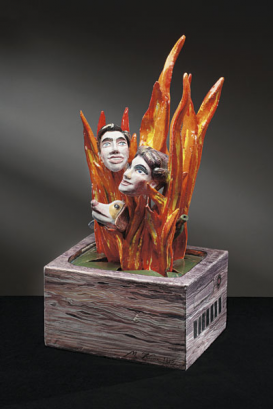

















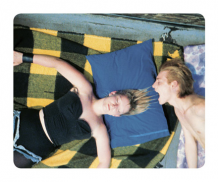




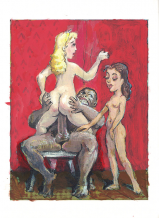
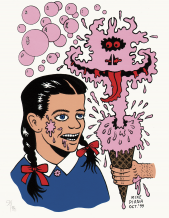
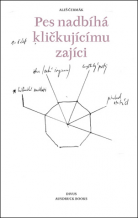
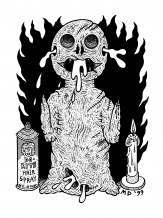


 New book by I.M.Jirous in English at our online bookshop.
New book by I.M.Jirous in English at our online bookshop.
Comments
There are currently no comments.Add new comment